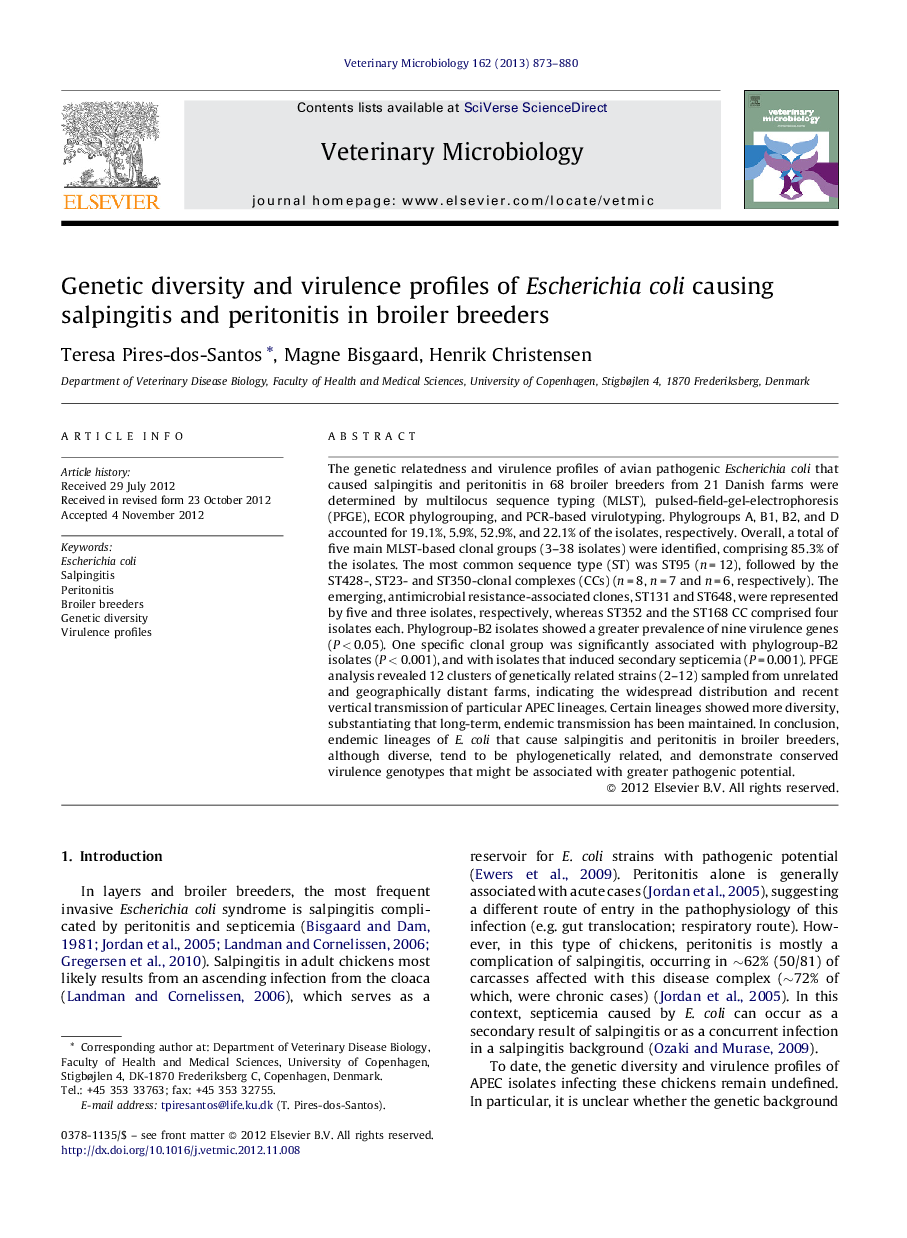| Article ID | Journal | Published Year | Pages | File Type |
|---|---|---|---|---|
| 5801111 | Veterinary Microbiology | 2013 | 8 Pages |
The genetic relatedness and virulence profiles of avian pathogenic Escherichia coli that caused salpingitis and peritonitis in 68 broiler breeders from 21 Danish farms were determined by multilocus sequence typing (MLST), pulsed-field-gel-electrophoresis (PFGE), ECOR phylogrouping, and PCR-based virulotyping. Phylogroups A, B1, B2, and D accounted for 19.1%, 5.9%, 52.9%, and 22.1% of the isolates, respectively. Overall, a total of five main MLST-based clonal groups (3-38 isolates) were identified, comprising 85.3% of the isolates. The most common sequence type (ST) was ST95 (n = 12), followed by the ST428-, ST23- and ST350-clonal complexes (CCs) (n = 8, n = 7 and n = 6, respectively). The emerging, antimicrobial resistance-associated clones, ST131 and ST648, were represented by five and three isolates, respectively, whereas ST352 and the ST168 CC comprised four isolates each. Phylogroup-B2 isolates showed a greater prevalence of nine virulence genes (P < 0.05). One specific clonal group was significantly associated with phylogroup-B2 isolates (P < 0.001), and with isolates that induced secondary septicemia (P = 0.001). PFGE analysis revealed 12 clusters of genetically related strains (2-12) sampled from unrelated and geographically distant farms, indicating the widespread distribution and recent vertical transmission of particular APEC lineages. Certain lineages showed more diversity, substantiating that long-term, endemic transmission has been maintained. In conclusion, endemic lineages of E. coli that cause salpingitis and peritonitis in broiler breeders, although diverse, tend to be phylogenetically related, and demonstrate conserved virulence genotypes that might be associated with greater pathogenic potential.
